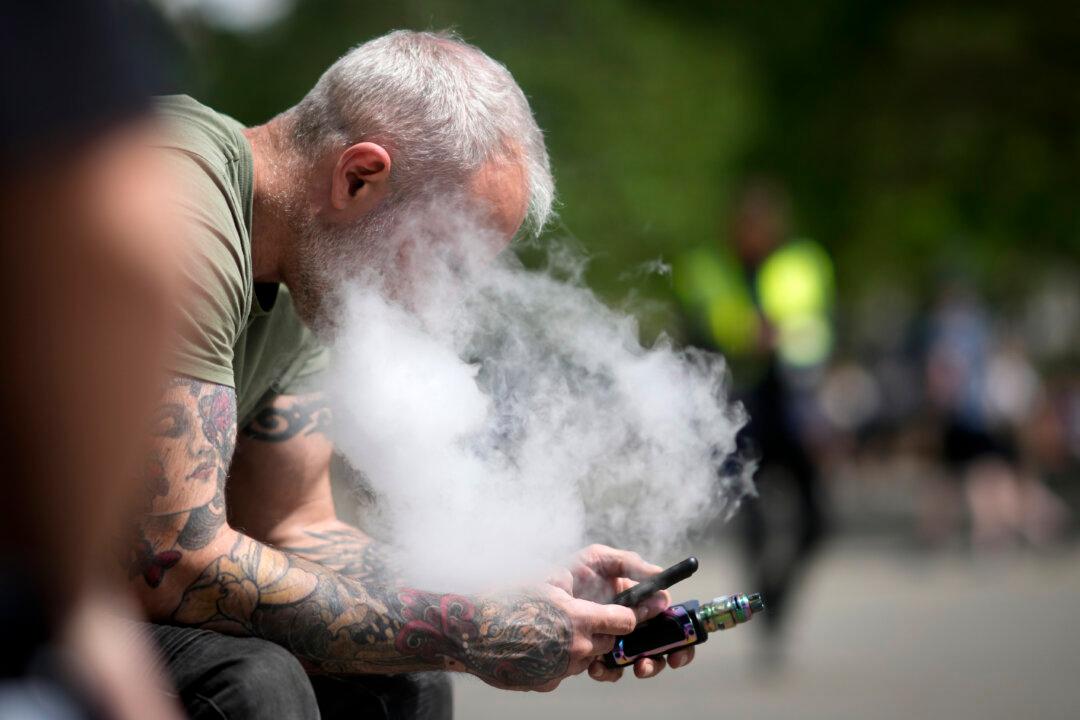The risk of severe illness or death from COVID-19 is “extremely low” in children and young people, according to new research.
The study—led by researchers at University College London (UCL), Imperial College London, and the universities of Bristol, York, and Liverpool—also found that while catching COVID-19 increased the likelihood of serious illness in those with pre-existing medical conditions and severe disabilities, the overall risk remained low.
One of the pre-print studies, led by paediatric registrar at the University of Bristol Dr. Clare Smith, found that 61 children and young people had died with a positive COVID-19 test from March 2020 through to February 2021.
Of these, some 40 percent died of COVID-19, meaning that 25 children and young people actually died from the virus out of an estimated 469,000 infections.
Dr. Smith told reporters at a briefing that this meant that “99.995 percent of children and young people who were infected with COVID-19 in England survived.”
Another study, led by Dr. Joseph Ward of the UCL Great Ormond Street Institute of Child Health, found that 251 young people aged under 18 in England were admitted to intensive care with COVID-19 during the first year of the pandemic until the end of February 2021.
Researchers said this equated to young people of that age group in England having a one in approximately 50,000 chance of being admitted to intensive care with COVID-19 during that time.
Russell Viner, a professor of child and adolescent health at UCL and a member of Sage, told the briefing: “We did find that for some vulnerable groups risk was higher, and quite a bit higher, but it’s really important to say that, for example, twice a very tiny risk is still a very, very tiny risk. Even 10 times a very, very tiny risk is still a very, very tiny risk.”
Prof Viner added that the risk factors found were “pretty identical” to those which could be identified in adults, such as older age, non-white ethnicity, obesity, and having more than one health condition, in particular, cardiovascular disease as well as diabetes.
He also said that those at a higher risk, which was “still a small risk,” were those who would have for some years been at risk for “almost any winter virus.”
Dr. Ward also said: “Factors linked to a higher risk of severe COVID-19 appear to be broadly consistent for both children and adults.
“Our study found a higher risk of admission to intensive care among young people of black ethnicity compared to white, as well as among young people with health conditions such as diabetes, asthma, and cardiovascular disease. Young people with multiple conditions had the highest risk.”
Lead author of the third pre-print study, Dr. Rachel Harwood, from the University of Liverpool, said: “Our meta-analysis found similar risk factors to the other studies, although we also found that obesity increased the risk of severe COVID-19 illness, something we’ve known for some time in adults but is only now becoming evident as an important risk in children and young people too.”
The UK’s Joint Committee on Vaccination and Immunisation (JCVI), the Department of Health and Social Care, and the World Health Organisation have been sent the preliminary findings, which were submitted to inform vaccine and shielding policy for those under 18.
Prof Viner said: “I think there’s a general feeling amongst paediatricians that probably too many children were shielded in the first elements of the pandemic, and that there’s probably very few children who need to shield, I think, according to this data.”
Dr. Liz Whittaker, clinical lecturer and consultant paediatric infectious diseases and immunology at Imperial College London, added that the vast majority of children would gain much greater benefits from being in society and going to school, getting exercise, and having occupational therapy and speech and language therapy.
“Those benefits much far outweigh any potential tiny risk of becoming severely unwell with COVID,” she said.
The JCVI is reviewing data from vaccine trials on children and young people to decide whether to extend the rollout, after the Medicines and Healthcare products Regulatory Agency authorised use of the Pfizer/BioNTech vaccine in 12 to 15-year-olds in June.
Prof Viner said: “In one sense, we confirm that the risk is extremely low. However, we do show for some groups that there is a risk of death, for example, the neurodisability group.
“They can already access (the vaccine) through the Green Book but there are some other groups in which some of the risks here which are not that different from those potentially in groups that are already being vaccinated, for example, young adults.
“So the JCVI will be thinking carefully about the equity angle, I’m sure.”
Dr. Whittaker added that the research would be able to help the Government ensure the Green Book, which is the guide to vaccine practice for health professionals, encompassed “the entire cohort of children” who should be recommended for vaccination.




